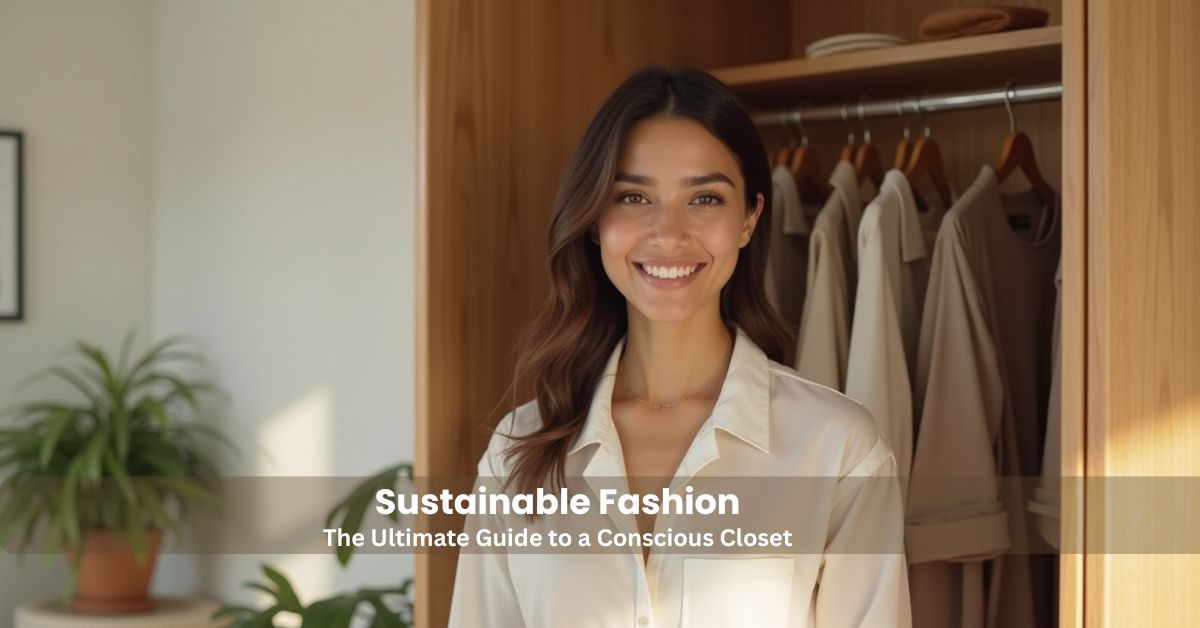Sustainable Fashion: What It Really Means and How to Embrace It
You’ve heard the term everywhere—from your favorite online store to major news outlets. But when someone asks, “What does sustainable fashion mean?” the answer can feel a bit fuzzy. Is it just about organic cotton? Is it only for people who can afford expensive designer labels?
Let’s clear the air. Sustainable fashion is a powerful, holistic movement that’s changing our world for the better. It’s not a passing trend; it’s a fundamental shift in how we view, produce, and consume clothing. At its heart, sustainable fashion is about fostering an industry that is ecologically sound and socially just.
This isn’t just a niche concern anymore. It’s a critical conversation about the future of our planet and the people on it. This ultimate guide will demystify the concept, break down its core pillars, and give you practical, actionable steps to participate. Forget the overwhelm; we’re in this together.
Beyond the Buzzword: A Deeper Definition
So, what does sustainable fashion mean in simple terms? Think of it as an umbrella term for clothing that is designed, manufactured, distributed, and used in ways that are environmentally friendly and ethically responsible.
The word “sustain” means to support, hold up, or endure. Therefore, sustainable fashion is a system that can support itself without depleting resources or causing severe damage. It aims to create a fashion ecosystem that operates in a way that can be maintained indefinitely, protecting both the people who make our clothes and the planet we live on.
It’s the direct opposite of the “take-make-waste” model that dominates the industry today. It’s about quality over quantity, longevity over immediacy, and people over profit.
The Three Pillars of Sustainable Fashion
To truly grasp the concept, it’s helpful to break it down into three interconnected pillars. Authentic sustainable fashion must address all three.
1. Environmental Sustainability
This is the aspect most people think of first. It focuses on minimizing the fashion industry’s enormous environmental footprint. This includes:
- Reducing water usage and pollution: The fashion industry is one of the largest polluters of clean water globally, thanks to dyeing and treatment processes.
- Using eco-friendly materials: This means organic fibers (which don’t use pesticides), recycled materials (giving new life to waste), and innovative fabrics that require less water and energy to produce.
- Lowering carbon emissions: From farming to manufacturing to shipping, the clothing supply chain is carbon-intensive. Sustainable brands work to reduce this by using renewable energy, localizing production, and optimizing logistics.
- Promoting biodiversity: Avoiding harmful chemicals that degrade soil and poison ecosystems.
2. Social Sustainability (Ethical Fashion)
A garment can’t be truly sustainable if the people who made it were treated unfairly. Social sustainability ensures safe working conditions and fair wages for everyone in the supply chain, from the cotton farmers to the garment workers. Key issues include:
- Safe working conditions: Factories should be free of hazards, with proper ventilation and fire exits.
- Fair living wages: Workers should earn enough to cover basic needs like food, shelter, and education, not just the minimum wage.
- No child or forced labor: Exploitation has no place in a just industry.
- Worker empowerment: The right to form unions and collectively bargain.
Often, the term “ethical fashion” is used specifically to highlight this social justice pillar. It’s a crucial part of the broader sustainable fashion movement.
3. Economic Sustainability
This pillar is about creating business models that are viable long-term. It’s not just about being a charity; it’s about building resilient companies that can compete in the market while doing good. This involves:
- Fair pricing: Paying a price that reflects the true cost of sustainable production, ensuring farmers and workers are paid fairly.
- Transparent supply chains: Knowing where materials come from and how clothes are made.
- Supporting local economies: Investing in local artisans and manufacturers to reduce transport emissions and strengthen communities.
The Problem with Fast Fashion: Why We Need Change
You can’t talk about solutions without understanding the problem. The rise of “fast fashion” over the last 30 years has created an unsustainable system. Brands like Shein, H&M, and Zara have trained consumers to expect new, ultra-cheap styles every week.
The hidden costs of this model are staggering:
- Environmental Damage: The industry is responsible for an estimated 10% of global carbon emissions—more than all international flights and maritime shipping combined. United Nations Environment Programme
- Immense Waste: The equivalent of one garbage truck full of textiles is landfilled or burned every second. Ellen MacArthur Foundation
- Water Consumption: It can take over 2,000 gallons of water to produce a single cotton t-shirt.
- Pollution: Textile dyeing is the world’s second-largest polluter of water.
- Human Exploitation: The relentless pressure for low prices often leads to poor working conditions and poverty wages in garment factories, tragically highlighted by incidents like the Rana Plaza collapse in 2013.
This is the context that makes the sustainable fashion movement not just a choice, but a necessity.
Principles of a Sustainable Fashion Brand
How can you spot a genuinely sustainable brand? Look for companies that embody these principles. A true sustainable fashion brand will be transparent about their efforts in these areas.
- Transparency: They openly share information about their factories, material sources, and business practices.
- Circularity: They design products with their end-of-life in mind, offering repair services, take-back programs, or designing for recyclability.
- Durability: They create high-quality, timeless pieces meant to last for years, not just a season.
- Slower Production Cycles: They release fewer collections per year, focusing on thoughtful design rather than chasing micro-trends
Materials Matter: A Look at Sustainable Fabrics
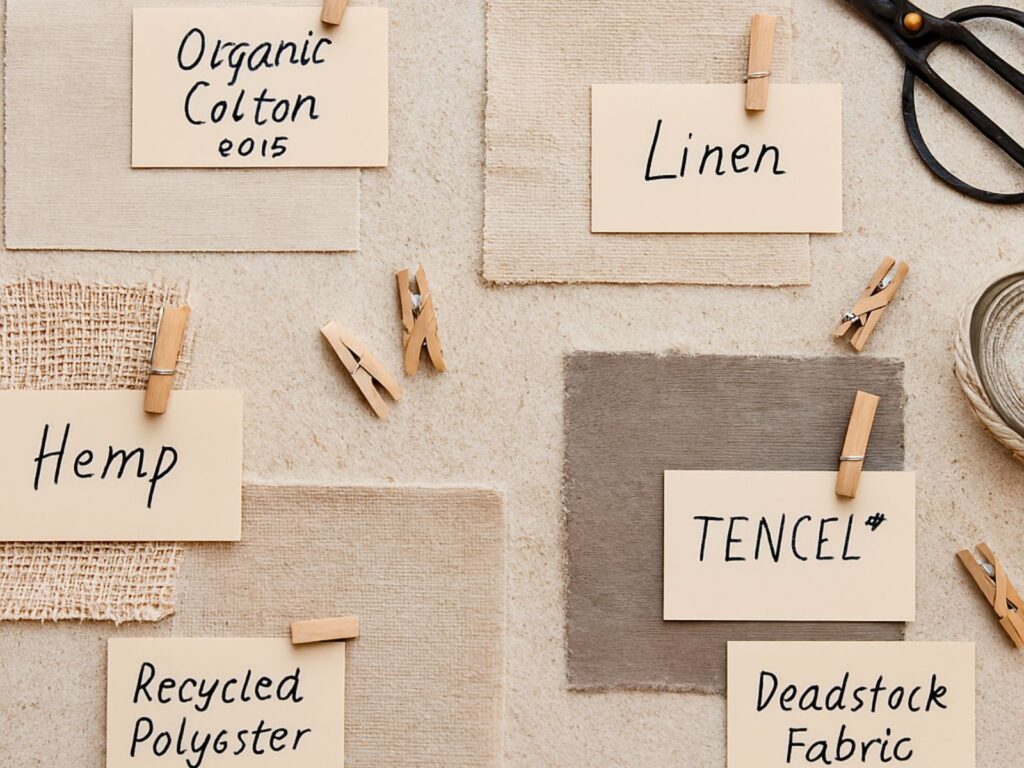
The fabric is the foundation of any garment. Choosing better materials is a huge step toward more sustainable fashion. Here’s a quick guide:
- Organic Cotton: Grown without toxic pesticides and synthetic fertilizers, using far less water than conventional cotton. Look for the GOTS certification
- Linen: Made from the flax plant, it’s a durable, biodegradable fiber that requires very little water and no pesticides.
- Hemp: A super crop that grows quickly, improves soil health, and requires no chemicals. The resulting fabric is incredibly strong and durable.
- Tencel™/Lyocell: A silky-smooth fiber made from sustainably sourced wood pulp in a closed-loop system that recycles over 99% of the water and solvents used.
- Recycled Polyester: Made from post-consumer plastic bottles, diverting waste from landfills and oceans. It uses significantly less energy to produce than virgin polyester.
- Deadstock/Upcycled Fabric: Using leftover fabric from larger mills that would otherwise be thrown away. This is a fantastic way to reduce waste.
No single fabric is perfect, but these options represent a far lower environmental impact than conventional materials.
The Power of Certification: GOTS, Fair Trade, and B Corp
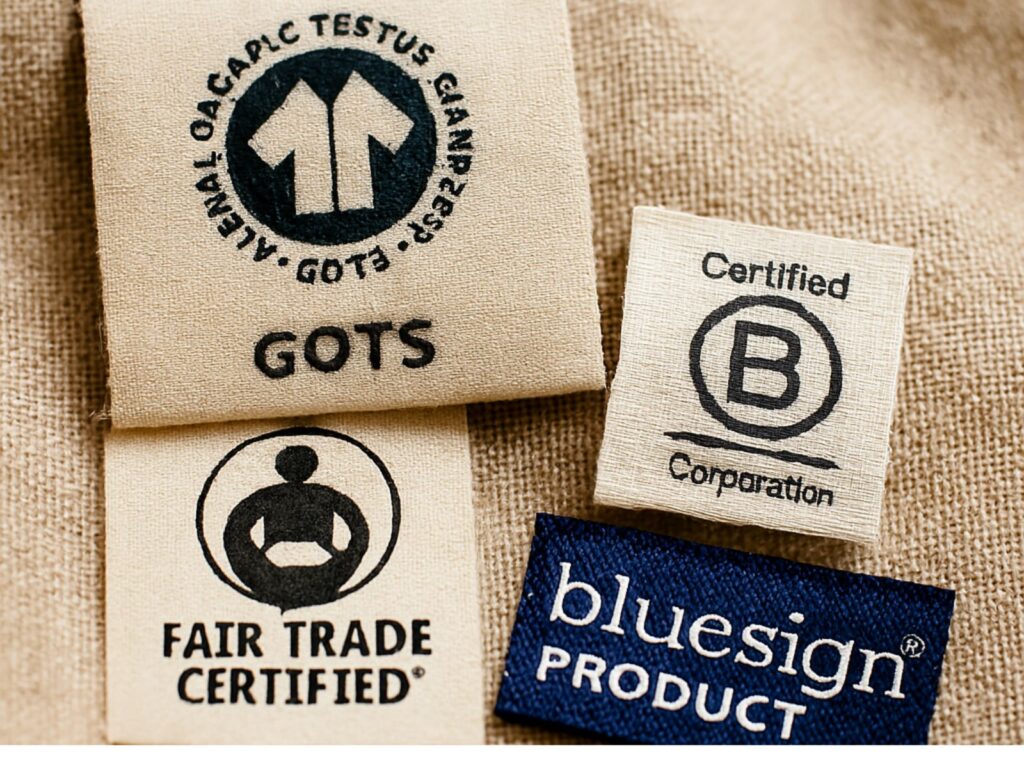
With so many greenwashing claims, third-party certifications are your best friend. They provide independent verification that a brand meets specific standards. Here are the key players in sustainable fashion:
- Global Organic Textile Standard (GOTS): The gold standard for organic fibers. It ensures strict environmental and social criteria throughout the entire supply chain.
- Fair Trade Certified: Guarantees that farmers and workers were paid fair prices and wages and worked in safe conditions.
- B Corp Certification: A holistic certification for businesses that meet high standards of social and environmental performance, transparency, and accountability. Patagonia and Allbirds are famous examples.
- Bluesign®: A system that ensures textile products are made with the lowest possible impact on people and the environment, focusing on responsible chemical management.
How to Be a Sustainable Fashion Consumer: A Practical Guide
You don’t have to be a fashion designer or a CEO to make a difference. The most powerful tool for change is your wallet. Here’s how you can participate in sustainable fashion right now.
1. Buy Less, Choose Well
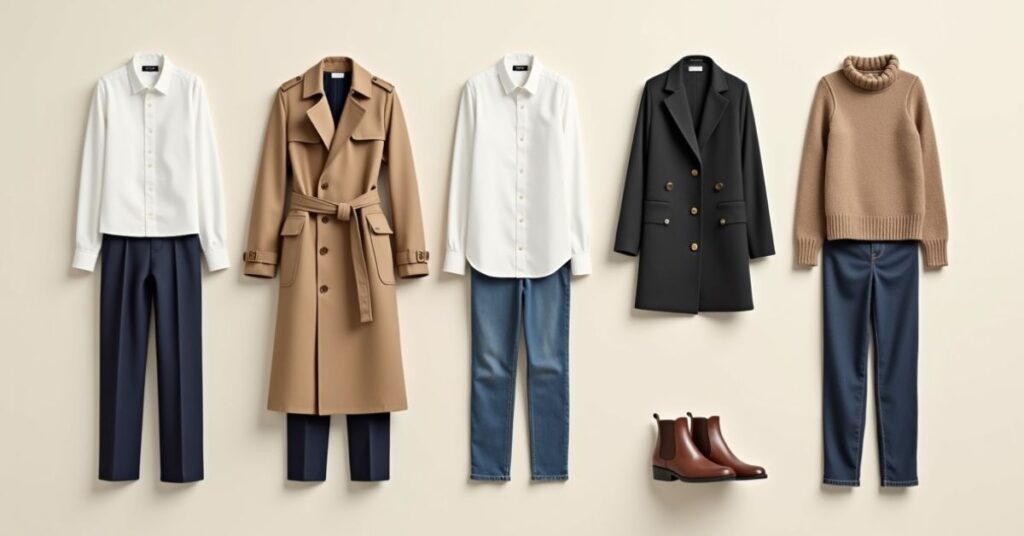
The most sustainable garment is the one already in your closet. Before buying anything new, ask yourself: “Do I really need this?” “Will I wear this at least 30 times?” Embrace a minimalist, curated wardrobe of pieces you truly love.
2. Embrace Secondhand and Vintage
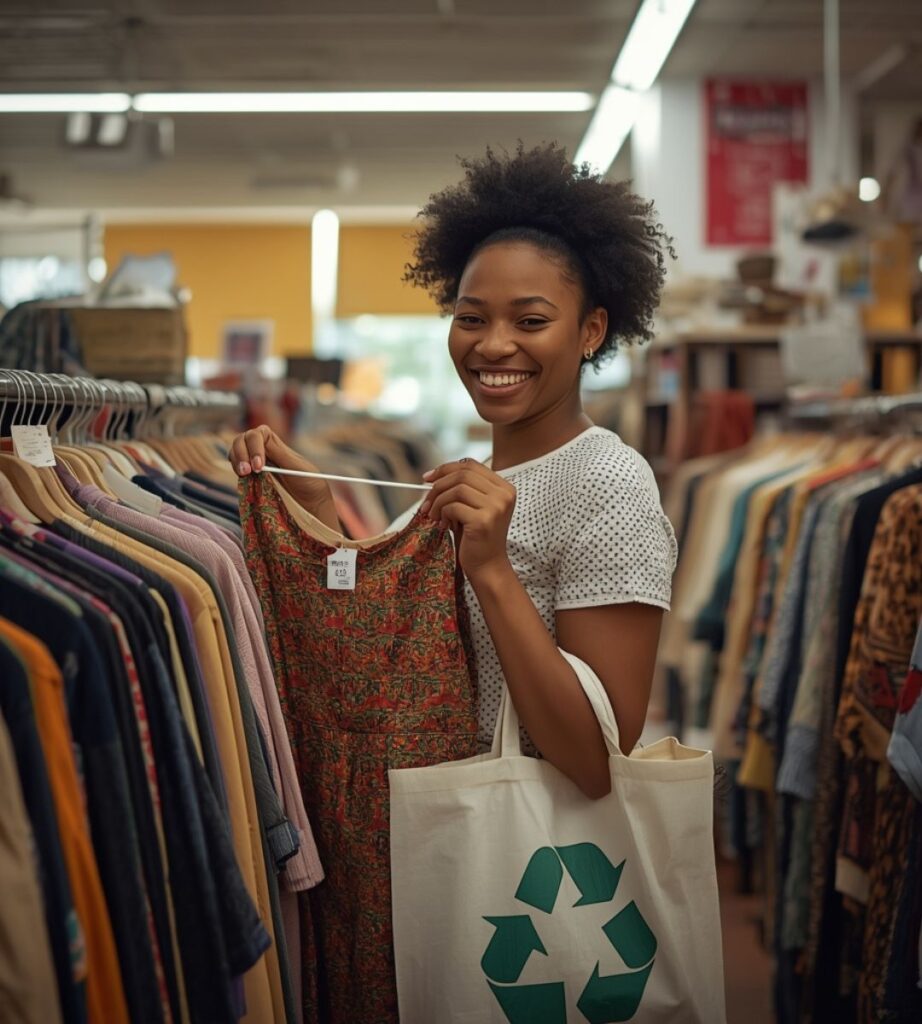
Thrifting, consignment stores, and online platforms like ThredUp or The RealReal are fantastic for sustainable fashion. You extend the life of existing clothes, save money, and find unique pieces. It’s recycling at its finest.
3. Support Sustainable and Ethical Brands
When you do buy new, do your research. Support brands that are transparent about their supply chains and committed to positive practices. Your purchase tells the industry what you value.
4. Look for Quality and Timelessness
Instead of chasing fleeting trends, invest in classic, well-made pieces. Look for strong stitching, quality fabrics, and a good fit. A timeless trench coat or a well-tailored pair of jeans will outlast a dozen trendy items.
5. Ask Questions
Don’t be shy! Email brands and ask, “Who made my clothes?” “Where are your factories?” “What is this material made from?” Brands that are truly committed to sustainable fashion will be proud to share their story.
Beyond Shopping: The Role of Care and Repair

Sustainable fashion doesn’t end at the point of purchase. How you care for your clothes has a massive impact on their lifespan and environmental footprint.
- Wash Less and Use Cold Water: Most clothes don’t need a wash after every wear. Washing in cold water saves energy and is gentler on fabrics.
- Air Dry: Tumble dryers are harsh on clothes and consume a lot of energy. Air drying is the most sustainable option.
- Learn Basic Mending: Sewing on a button, darning a sock, or patching a hole can give a garment many more years of life. It’s a rewarding skill that deepens your connection to your wardrobe.
- Use a Professional Tailor: A simple alteration can transform a garment that doesn’t quite fit into a favorite piece.
Sustainable Fashion is for Everyone: Debunking the Cost Myth
A common misconception is that sustainable fashion is expensive and elitist. While ethically made clothing often has a higher price tag (because it accounts for the true cost of production), the movement is fundamentally about mindset, not money.
The most sustainable actions—buying less, shopping secondhand, and caring for your clothes—actually save you money. It’s about shifting your spending from a high volume of cheap items to a lower volume of cherished, long-lasting items. Sustainable fashion is accessible to anyone willing to be more mindful about their consumption.
The Future of Fashion is Circular
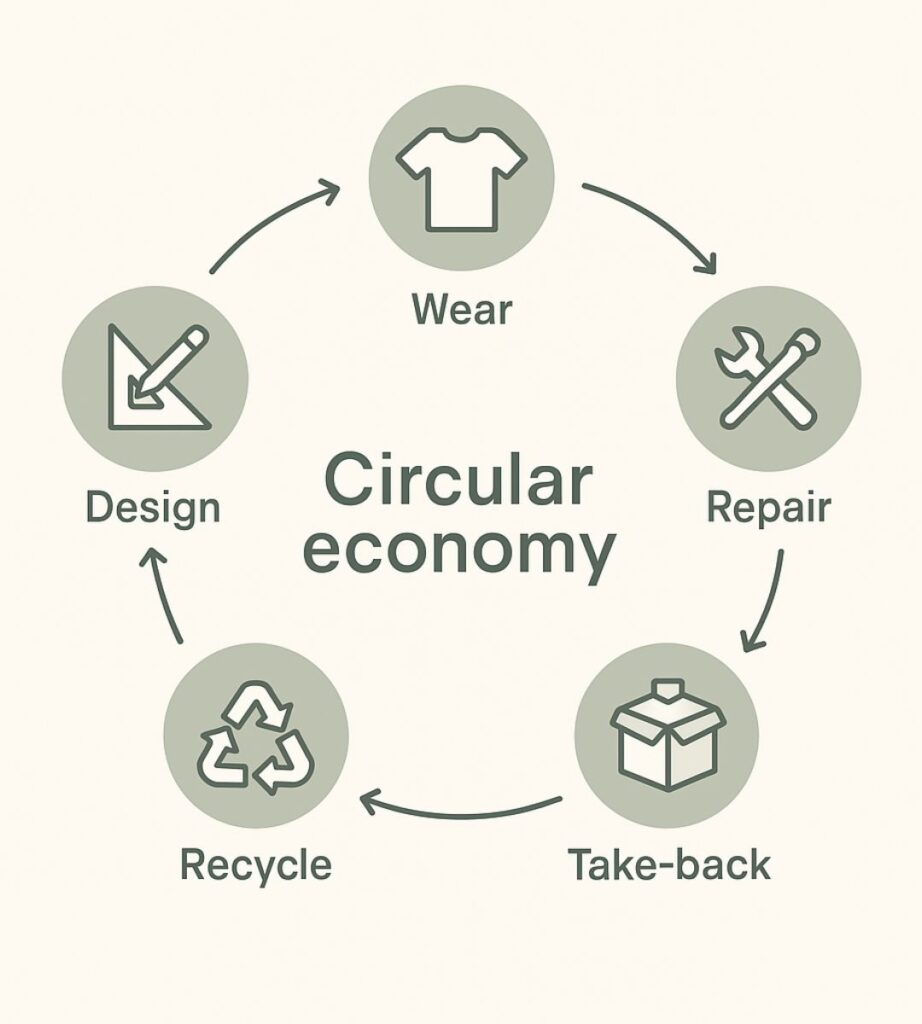
The end goal of the sustainable fashion movement is a “circular economy.” This is a radical departure from our current linear system (take-make-waste). In a circular fashion model:
1. Clothes are designed to last longer and be repaired.
2. At the end of their life, they are taken back by the company.
3. The materials are then broken down and spun into new, high-quality fibers.
4. These new fibers are used to create new clothes, and the cycle continues.
This eliminates waste and pollution by design. Brands like Patagonia are leading the way with their Worn Wear repair and recycling programs.
Conclusion: Your Journey Starts Now
So, what does sustainable fashion mean? It’s a multifaceted answer, but it boils down to respect. Respect for the environment, respect for the people in the supply chain, and respect for the clothes themselves.
It’s not about being perfect. It’s about progress. Every small choice—mending a sock, choosing a secondhand dress, researching a brand before you buy—adds up to a massive collective impact.
You have the power to shape the future of fashion. Start where you are, use what you have, and do what you can. Your journey toward a more conscious closet begins with a single, thoughtful step.
What’s one step you’re taking towards a more sustainable wardrobe? Share your thoughts in the comments below!

